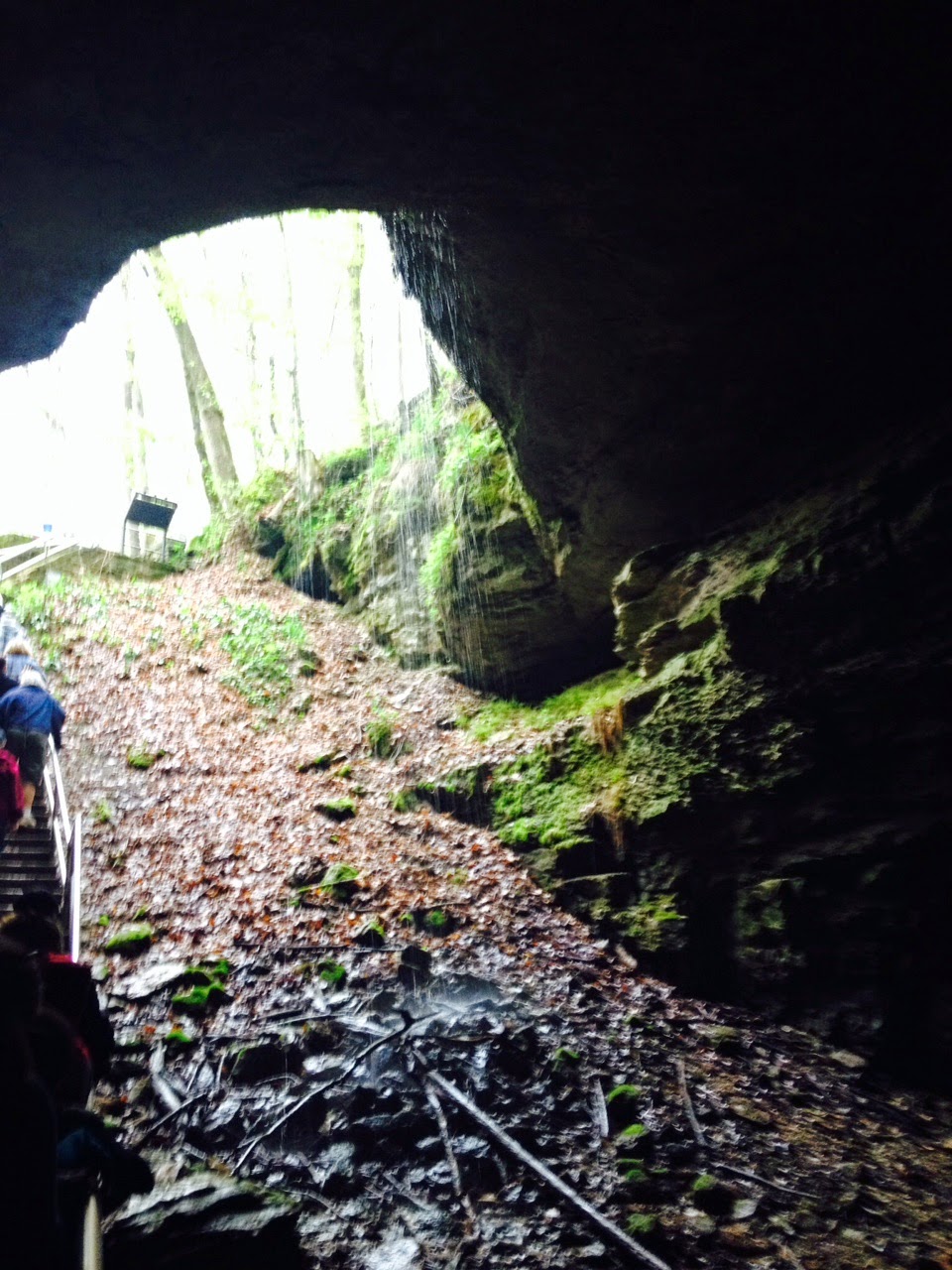 | |
| The Historic Entrance to Mammoth Cave |
With Poem in Your Pocket Day occurring the day before our trip, Isaac chose McCombs' poem Brush Fire to carry and share with his classmates at school. When we entered the cave the next day, we made our first stop in the cave dome that sits directly below the Mammoth Cave Hotel. This stop reminded us of Brush Fire where we read of forty acres burning and the Hotel surviving while a group below is explores, oblivious of the fire raging above them.
 |
| Isaac carries Brush Fire for his #PocketPoem |
The persona poems in Ultima Thule fed our shared interest in history, especially since the first few poems are persona poems told from the voice of former slave guide Stephen Bishop. Bishop was a slave owned by Dr. John Croghan, the owner of Mammoth Cave between 1839 and 1849. When not leading guided tours, Bishop explored the depths of the cave and found hundreds of miles of passageways including what he called The Bottomless Pit.
Before I crossed it on a cedar pole, legs
dangling into blackness, here the tours....
"Now, when I turn off the lights you have to promise not to scream." Our park ranger and tour guide calmly prepared us for the portion of our tour that would lead us over a steel grate looking down into The Bottomless Pit. However, before leading us into Dante's Pass and over the pit, we stopped in front of the Giant's Coffin (a large rock formation) and he turned off all the lights, so we could experience a pitch black darkness possible only this deep within the earth. Isaac says the Giant's Coffin stop was one of his favorite on the tour because he enjoyed the park ranger's stories and the momentary experience of complete darkness and silence.
 |
| Inside Mammoth Cave |
 |
| Candlewriting at Mammoth Cave |
After two hours of exploring cave passages and learning about the rich human history of Mammoth Cave, we exited the cave feeling full of new knowledge gained through experience and enhanced because of our study of poetry.
 |
| Exiting Mammoth Cave |
 |
| Spring 2014 at Mammoth Cave, Kentucky |




